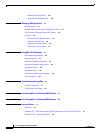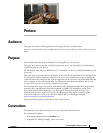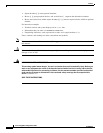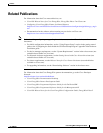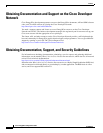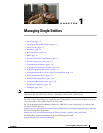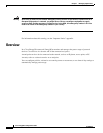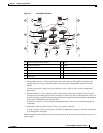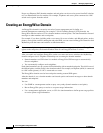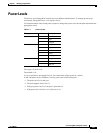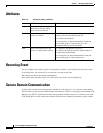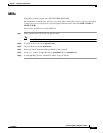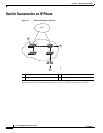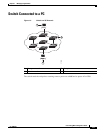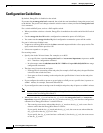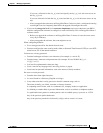
1-4
Cisco EnergyWise Configuration Guide
OL-19806-03
Chapter 1 Managing Single Entities
Creating an EnergyWise Domain
Power over Ethernet (PoE) domain members and end points can also receive power from PoE switches
or Cisco EtherSwitch service modules. For example, IP phones and access points connected to a PoE
switch receive power from the switch.
Creating an EnergyWise Domain
An EnergyWise domain is treated as one unit of power management and is similar to a
network-management community (for example, a VLAN Trunking Protocol [VTP] domain). An
EnergyWise domain consists of Cisco domain members and end points. The domain members forward
messages to other members and to end points.
For example, if you have a building with a core router, 10 access switches, and 400 end points, such as
phones, access points, and PCs running the end point SDK, you can create an EnergyWise domain called
MyBuilding with the router and switches as domain members.
Note If you want to implement power management applications on a management station and EnergyWise
agents on the end points, the domain members must all run EnergyWise Phase 2 or later.
After you enable and configure EnergyWise on the core router and access switches, the MyBuilding
domain configures itself. Neighbor relationships are set among the domain members.
• Domain members use CDP when it is enabled or EnergyWise UDP messages to automatically
discover neighbors.
• You can manually configure static neighbors,
Each domain member sets up a parent-child relationship with an attached end point. The child is one of
the 400 end points, and the parent is the domain member. For example, an IP phone (child) is connected
to a PoE switch (parent), or a PC is connected to a router.
The EnergyWise domain can also have end points running custom SDK agents.
After the domain is set, a domain member can forward queries and control messages to other domain
members and endpoints.
You can
• Use SNMP or a management station to query every entity (domain member or end point).
• Run an EnergyWise query to receive or set power usage information.
• Use a management application, server, or CLI of a domain member to define power usage policies
or receive power usage information.



